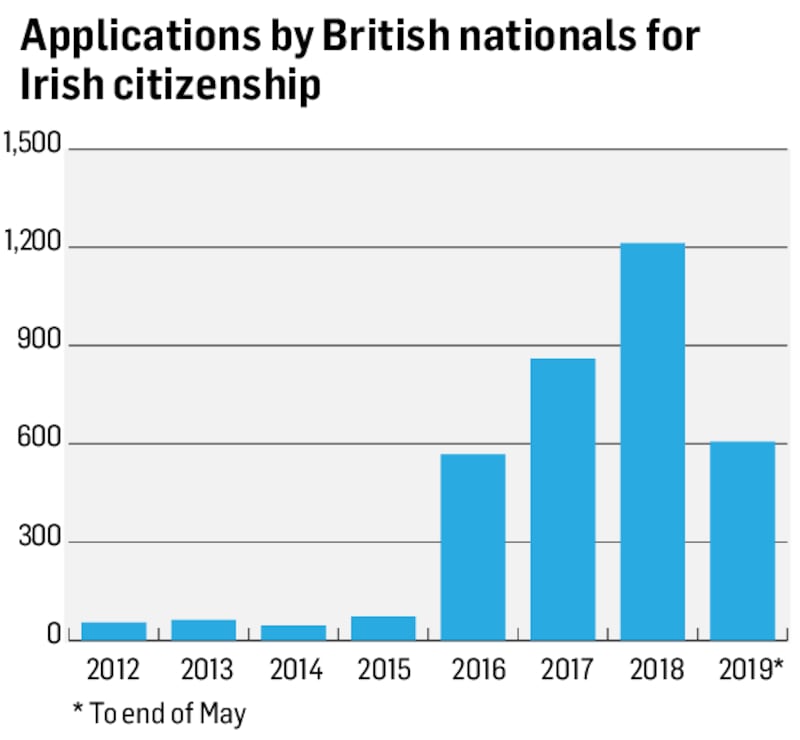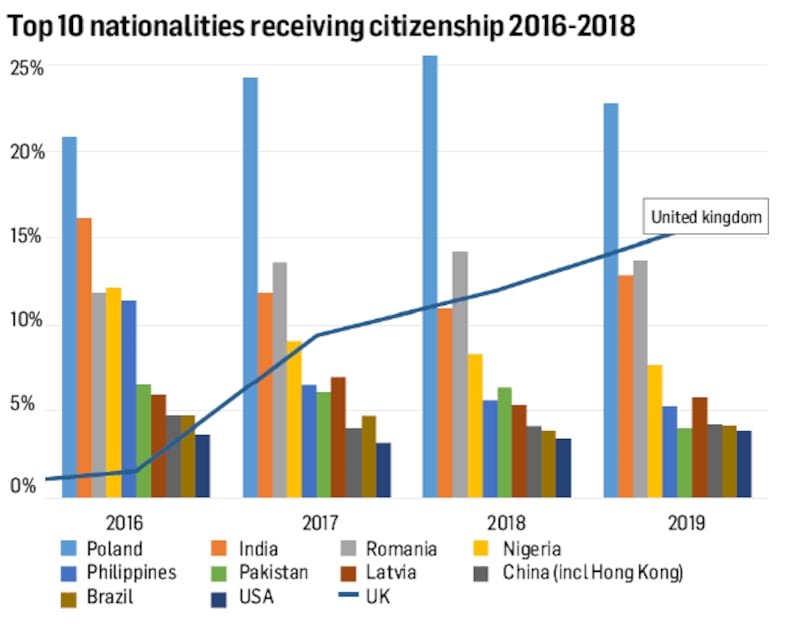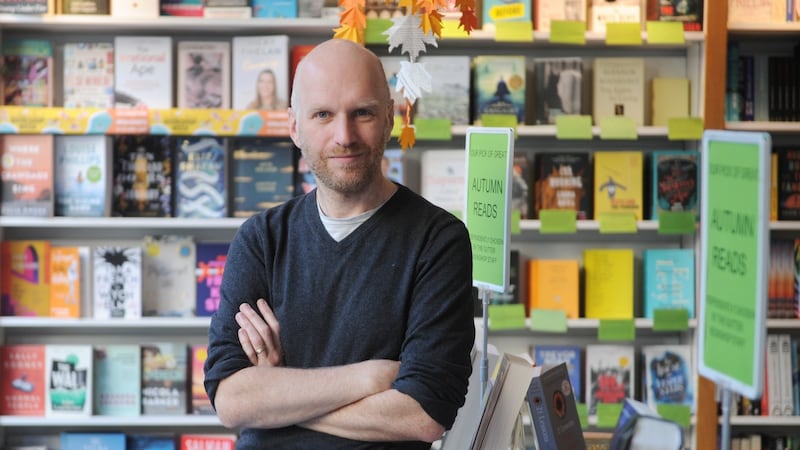Citizenship ceremonies are generally moving and upbeat events, where 3,000 new citizens swear an oath of fidelity to Ireland, but the path to that happy moment can be fraught and confusing.
Citizens have a range of rights, may hold an Irish passport and can vote in all referendums and elections. Citizenship can be acquired by birth, or descent, or through naturalisation, but aspiring citizens must apply and undergo a process that can take just a few months, but in rare cases can last years.
The process of becoming an Irish citizen got even more complicated on July 17th, when the High Court ruled that one year’s “continuous residence” was required before applying for citizenship. The judge interpreted this as “unbroken” residence. This significant decision meant that a naturalisation applicant could not so much as visit Belfast for an afternoon, never mind take a weekend break or work trip, for a year before applying.
A previous discretion allowed by the Minister for Justice – permitting applicants six weeks abroad – is now not legal.
The High Court ruling wasn't so much shocking as just feeling like more of the same. It was already a slow and opaque bureaucratic process. Now it seems even slower and less clear
At any given time there are about 12,500 citizenship applications in process, ranging from just received to awaiting a citizenship ceremony, according to the Irish Naturalisation and Immigration Service (Inis). By September 17th, with new applications plus recently approved awaiting ceremony, this had jumped to 16,009.
For those in the midst of the process, the ruling threw things into question. Suddenly those moving through the system – already a highly bureaucratic process – wondered if their applications were valid.
Journalist Liam Stebbing remarks: “The High Court ruling wasn’t so much shocking as just feeling like more of the same. It was already a slow and opaque bureaucratic process. Now it seems even slower and less clear.”
Last month, Minister for Justice and Equality Charles Flanagan announced plans for legislation to address the High Court ruling. On September 11th he sought to assure that “we are doing everything possible to put in place a solution” urgently.
This week the Department of Justice said “the ruling is not considered to have consequences for anyone who has already obtained citizenship under the Act”, and there is “intensive work” to finalise a draft Bill. But legislation moves very slowly and a parliamentary insider reckons there’s little chance of it being on the statute books this year.
In the meantime, Roderick Jones, an Australian whose challenge of his citizenship refusal led to the High Court case, is appealing the residency decision on October 8th. This could overrule or clarify the High Court decision, and iron out this restriction currently in the system.
The Department of Justice says: “The outcome of the appeal will have a bearing on whether or not legislation is required.”
The busiest day ever on inis.gov.ie was after the 2016 Brexit result, when phonelines were also jammed
Despite assurances, Stebbing says: “We’ve been left with a sense of uncertainty. The website doesn’t say if the department is still processing applications, or whether everything is on hold. It seems not to be responding to letters or emails, and it’s hard to get through on the helpline – which is only open five hours a week. I can’t be the only person wondering if we’ve been left in limbo.”
Stebbing knows the service is under pressure but more information on the Inis site about what’s happening with current applications would be useful, he says.
So what is the path to citizenship? All citizenship applications are handled by 61 Inis staff in Tipperary, including both naturalisation (residents for five-plus years, or three years for spouses of Irish citizens) and “Irish association” applicants, eligible “through blood, affinity or adoption”.
The busiest day ever on inis.gov.ie was after the 2016 Brexit result, when phonelines were also jammed. There’s a popular impression of a tsunami of applications for Irish citizenship from UK nationals since the Brexit vote. A senior manager in Inis says there has been a tenfold increase in applications from Britain, but this from a very low base. An average 60 British citizens a year were naturalised between 2011 and 2016. In 2017-2018 the average was 589. British citizens made up 15 per cent of naturalisations in the first half of 2019.
Overall, there has been a slight increase in applications, but the rise is steady rather than dramatic. In 2018, 12,862 people applied for Irish citizenship, and 8,226 certificates of nationality were issued.


Inis aims to process relatively straightforward applications in general within six months; the Minister says average processing from receipt to decision was 6.7 months in 2016, 7.2 months in 2017 and 6.5 months in 2018.
But it can be much longer, and applicants often feel they’re left in the dark, with no explanation of their application status. Less-straightforward applications take longer, says a senior manager, because Inis is “making huge efforts to get the available information together”.
He paints a picture of Inis trying to “give a fair chance to applicants”. Incomplete documentation causes the biggest delays. Inconsistencies in applications prompt further queries; and requests for more information or clarification from other agencies, sometimes outside the State, take time.
It's a complex process, and it has to be. An Irish passport is highly valued, with many benefits. The Minister has to protect the integrity of the immigration process
“It’s a complex process, and it has to be. An Irish passport is highly valued, with many benefits. The Minister has to protect the integrity of the immigration process, and other states must have confidence in our system.”
Yet stories abound of delays, and there’s limited information on the Inis site about what happens after an application is sent. Stebbing describes receiving a letter that he was at stage two, but without saying how many stages there are. “It could be two or it could be 20.”
For the benefit of applicants in the dark, there are in fact three stages in the process.
Stage one assesses the application for eligibility. Passports are usually returned after about six weeks (though it appears to sometimes take longer). Inis aims to let people know quickly if they're not eligible, and often allows applicants a chance to submit missing documents. Anecdotally, complex situations can take a long time at this stage; one South American long-term resident here applied for citizenship in April 2017 and only moved from stage one this year.
Stage two is the bulk of the process up to approval or refusal. Information is verified, extra information is sought (eg evidence of residence, or from other agencies), and an applicant's "good character" is checked out. A timeframe for this stage is impossible to give, the manager said, and some who think theirs is a straightforward application might find it otherwise.
Stage three is the end: the information goes to the Minister for approval or refusal.
Some applicants report a lack of clarity about the process, infrequent communication and difficulty getting a response to queries. One shows me a letter requesting information, that adds in bold: “It would greatly assist us if you only contact us if it is absolutely necessary as this will allow us to devote the maximum time to the processing of applications.”
The process is constantly evolving to meet the demands of a complex and well-educated client base
The Inis manager seems surprised applicants find it opaque. While he’s aware of unhappiness about how long some applications take, in general they get very positive feedback, he says.
Inis is being reorganised, with a customer improvement plan and “significant work restructuring, and changes to the way we do our jobs. On foot of that, by early next year the public will see significant improvement. The process is constantly evolving to meet the demands of a complex and well-educated client base.”
Eight Inis staff cover the helpdesk twice a week. Callers say it can be hard to get through and if the phone isn’t answered there’s no message and it rings out; the manager says there are frequently periods without calls to the helpdesk.
Once an application is eligible, most refusals are for “character”, which “must measure up to reasonable standards of civic responsibility as gauged by reference to contemporary values”, says the manager. Hundreds of applicants are refused annually, very occasionally even after a ceremony has been scheduled.
In the meantime, the proposed law on unbroken residency has still not started its legislative journey, and next week’s Court of Appeal hearing could be significant.
Inis is continuing to receive and process applications and advises people to continue to submit them. But while the numbers in the queue for the final stage of naturalisation – taking an oath at a citizenship ceremony – lengthens, two ceremonies, scheduled for September 30th and early December, have been postponed pending a “legislative solution”.
The limbo continues, as does the build-up of citizens-in-waiting.

Waiting for their Irish citizenship
Bob Johnston
Johnston, owner of Dublin's Gutter Bookshop, moved from the UK in 2000 "on a whim" after falling in love with Ireland "on a Ryanair jolly" – "one of the mad things you do in your 20s". He set up the independent bookshop in 2009, and in August 2016 married an Irishman. As we spoke he was about to post his bulky citizenship application. Initially he put it off, daunted by the paperwork, and then the High Court ruling stopped him short.
He didn’t apply as a spouse. “I decided it was easier to get three bits of information about five years for myself, than three bits of information about two people for three years.”
Brexit was a factor in his decision to apply. Plus, Johnston regretted not being able to vote in “important recent referendums, which affected me. I rued that I hadn’t citizenship.” But more than that, “having lived here for 19 years, this is my home, and I feel at home here. So I wanted to take the next step to make it more official. It’s where I live and belong. It was time to clarify that.”
He found surprisingly little information online, but good guidance from Inis for filling out the form. The citizenship application for him has not been too arduous so far, compared to more complicated circumstances. “I do feel lucky. It’s just a bit fraught wondering how long it will take.”
Suad Al Darra and Housam Ziad
Data scientist Suad Al Darra and her husband, software engineer Housam Ziad, arrived from Syria, via Egypt, in 2014, when she was offered a job here. They both have work visas. Al Darra applied for Irish citizenship in February, Ziad two months later. "We are lucky to live in Ireland but the visa situation is making us feel frustrated, isolated and alone," she says.
The day they hopefully get Irish passports “will literally be life-changing for us”.
Without Irish citizenship they cannot travel anywhere, even to Belfast, without a single-entry visa for each trip, and applying takes “time, money and effort”: getting documents together, booking flights before knowing you have a visa, time off for embassy appointments. Also, they would like to be able to visit family.
Inis sought extra documents, including supermarket receipts and GP appointments, as proof of residence. In July Al Darra moved to stage two. She is not optimistic about the timescale; three friends applied over a year ago and haven’t moved from stage two.
Ziad’s progress has been significantly slower, and he hasn’t even been assigned an application number. His circumstances are complicated. Because his grandfather moved to Syria as a Palestinian refugee in 1948, Ziad is not a Syrian citizen, but has a Syrian travel document. When he needs to travel in Europe professionally, some countries don’t recognise his documents for a Schengen visa. “It is much worse for him. He needs citizenship the most.”
The six weeks rule affected Al Darra’s job as a data scientist consultant for Unicef in Ireland, “which involved lots of travelling. I had to cut it down to make sure I don’t break that rule. I missed lots of meetings and couldn’t keep my performance, so I quit to get a job that doesn’t require travelling.”
I think Ireland is home for us now. We work, we pay taxes, we have friends
Ziad had difficulty last year getting to a conference in Japan to present research. Renewing his Garda National Immigration Bureau card took time, then the Japanese Embassy didn’t recognise his Syrian travel document and issued a temporary Japanese document.
The ultimate irony was when the European Commission invited them to a conference on migration research, and the Belgian embassy wouldn’t grant Ziad a Schengen visa. They both got there eventually, after a lot of hassle and delay. “You can imagine how all those incidents are stressful and time-consuming. And how an Irish passport would have solved the issue.”
Aside from that, “I think Ireland is home for us now. We work, we pay taxes, we have friends. It’s our home already, whether we take citizenship or not.”
She worries. “I don’t understand the system. I don’t know if I’m paused at stage two, and Ziad has no application number . . . I’m counting the days till we can get citizenship.”
Liam Stebbing
Irish Times journalist Liam Stebbing is typical of many English people living here. He moved with his Irish girlfriend Evanna Linehan in 1996, after they met in Paris. They married a year later, and have two daughters in college. Stebbing has worked continuously in Ireland since then, and from 2001 at The Irish Times.
In 2013, renewing his UK passport, he considered getting an Irish one, but “it seemed a lot of paperwork for not much benefit, given that both were EU passports. Now I wish I had.
“I feel a funny mixture, halfway between British and Irish.”
He applied mainly for practical reasons, but, as he has watched the UK split over Brexit, the values represented by an Irish passport have become increasingly important.
“British politics seems more and more deranged. It highlights for me the value of living in a country whose political system prioritises compromise over division, and a country where most people see the value of working with their neighbours. There are lots of other reasons why this feels like home now, and why I’ll be proud to be given Irish citizenship, but right now, looking at what’s happening in the UK, that’s a pretty powerful one.”
Because his spouse is Irish, Stebbing needed only three years of documentation, but, as well as the basics, including any passports in his 23 years here, he needed a marriage cert, an employer’s letter, bank and mortgage statements, P60s, bills for three years; some documents had to be witnessed.
He applied in June 2018. In February “a very friendly woman” on the helpline said his application was “in the outer reaches”. In June, a year after he applied, an envelope with a harp arrived. “Evanna texted me a photo of it, but it was nothing exciting”, just a request for a copy of her passport, and saying character checks can take considerable time.
For months he couldn’t get through on the helpline; then, in mid-September, 15 months after he applied, he was told he’d progressed to the third stage and his application was being sent to the Minister. He has to await the legislative remedy before his ceremony is scheduled, and he will eventually become a citizen.
Residency, citizenship and passports
There are various categories of residency in Ireland, but citizenship differs from, say, simple legal residence for EU nationals.
People acquire Irish citizenship by birth, or descent, or through naturalisation. Irish citizenship through birth or descent is complex; a person may be entitled to citizenship based on their parents’ or grandparents’ Irish birth.
Generally, one can apply for citizenship through naturalisation after legal residence for five years (three if married to an Irish citizen).
Only citizens are entitled to an Irish passport. Citizenship entitles people to vote in all referendums and elections.











